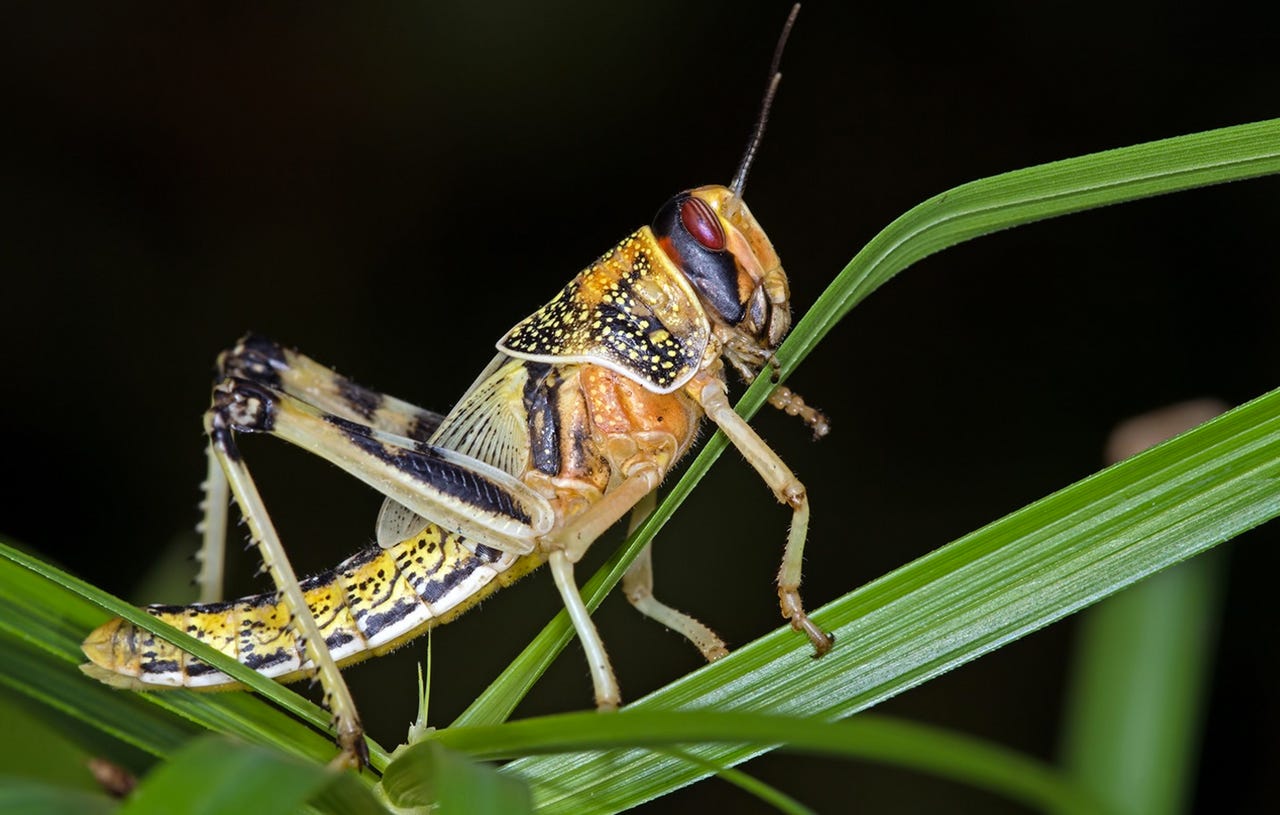Cyborg locusts set to become high-tech bomb sniffers


A team of engineers from Washington University in St. Louis hopes to exploit the sense of smell in locusts to create biorobotic creatures able to detect explosives with accuracy far greater than our current capabilities.
On Tuesday, the academic institution said Baranidharan Raman, associate professor of biomedical engineering in the School of Engineering & Applied Science, has received a grant worth $750,000 from the Office of Naval Research (ONR) to spend the next three years working on a "bio-hybrid nose" using locusts.
We're used to seeing dogs being used for their highly-developed sense of smell in detecting bombs, explosives and drugs, but the locust has a sense of smell which is far more advanced.
Therefore, according to the engineering team behind the project, the locust could be used to create "new biorobotic sensing systems that could be used in homeland security applications."
Locusts are able to distinguish between different scents and odors in complicated situations, such as when odors overlap or background conditions would otherwise make it difficult to tell the difference between smells.
For the last few years, Ramen has been studying these abilities and has even been able to train locusts to hunt out particular smells.
These biological capabilities could one day replace artificial sensors currently employed to detect explosives and potentially give military agencies another handy tool for use in the field.
"Why reinvent the wheel? Why not take advantage of the biological solution?" Raman said. "That is the philosophy here. Even the state-of-the-art miniaturized chemical sensing devices have a handful of sensors. On the other hand, if you look at the insect antenna, where their chemical sensors are located, there are several hundreds of thousands of sensors and of a variety of types."
To take advantage of the locusts' sense of smell, the team plan to create robotic, hybrid bugs with plasma "tattoos" on their wings which will generate mild heat, giving operators the chance to steer the insects towards particular locations. For example, heating up one wing will turn the locust the opposite direction.
As reported by Popular Science, the locusts will also have electrodes implanted into their brains which will give the engineers control of their antennae, used by the insect in detecting scents.
This information will then be recorded by the electrode and transmitted to a tiny backpack the locust will wear which can log neural activity or send it wirelessly to the operator.
These technologies have all been tested separately and now needed to be merged with their insect hosts in future tests.
We already have bomb-sniffing dogs, dolphins and other creatures, but Ramen told the publication the true beauty in these experiments lies in the relative simplicity of the locust brain, which would allow for greater control and hijacking of sensory data.